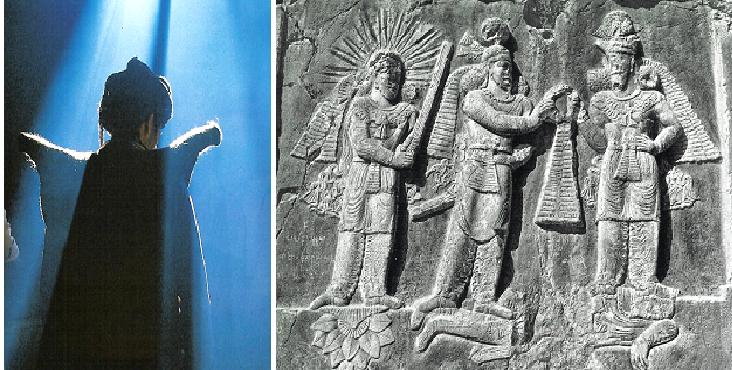The Caucasus has experienced a profound cultural symbiosis with Iran for thousands of years. As noted by Professor Mark Whittow of Oxford University:
“The oldest outside influence in Trans-Caucasia is that of Persia (p.203)…many of its populations, including Armenians and Georgians, as well as Persians and Kurds, the Transcaucasus had much closer ties with the former Sassanian world to its south and east than with the world to the west (p.204)”.
[Whittow, Mark, The Making of Byzantium: 600-1025, Berkley: University of California Press, 1996, p. 203-204].The ancient Iranian Nowruz (New Year) festival of March 21 continues to be celebrated in the Caucasus, nearly two centuries after the Russian conquests. The Nowruz festival for example, is now officially recognized in the Republic of Georgia:
- Nowruz in Georgia and the Georgian Legacy in Iran – نوروز در گرجستان و میراث گرجستان در ایران – pdf -see also Nowruz declared as a national holiday in Georgia (Report by the Georgian News Agency on March 21, 2010).
Of great interest are the Nowruz-style celebrations by the followers of the ancient cult of Mithra in Armenia. A common misconception is that all Armenians are Christian, when in fact, a Mithra movement has been in existance since the arrival of Indo-Europeans into the Iranian plateau, Central Asia, the Indian subcontinent, Anatolia and the Caucasus.
Celebration of March 21, 2010 in Garni Mehr Temple -Храм Солнца в Гарни, Армения 21.03.10 – Note that “Mihr/Mehr” is Iranian/Armenian for “Mithra”. The video also shows Mithraic prayers at the temple, and the Zoroastrian-style “sacred flame”. Of special interest is the music, which is virtually identical to traditional Iranian and Greek-Anatolian-Balkan styles.
The cult of Mithra has many underground followers in Iran as well, especially within Sufi brotherhoods, and among the Kurds of not only Iran, but also Turkey, Iraq and Syria.
(LEFT) Kurdish man in northwest Iran engaged in the worship of Mithras in a Pir’s (mystical leader/master) sanctuary which acts as a Mithraic temple (Courtesy Kasraian & Arshi, 1993, Plate 80). Note how he stands below an opening allowing for the “shining of the light”, almost exactly as seen with the Mithraic statue in Ostia, Italy. These particular Kurds are said to pay homage to Mithra three times a day (RIGHT) The black-white photo shows Mithra (to the left of photo) standing upon a lotus (Ghirshman, 1962 & Herrmann, 1977). Trampled beneath the feet of Ahura-Mazda and Ardashir II (r. 379-383) (center) is an unidentified defeated enemy (or possibly Roman Emperor Julian the Apostate). Of interest are the emannating “Sun Rays” from the head of Mithra. Note that the object being held by Mithra may be some sort of diadem or ceremonial broadsword; Mithra appears to be engaged in some sort of `knighting`of Ardashir II as he receives the `Farr`(Divine Glory) diadem from the supreme divinity, Ahura-Mazda.
The modern day Republic of Azarbaijan (name first applied in May 1918) was once a part of the iranian realm before its conquest by imperial Russia in the early 19th century. Despite nearly two centuries of “de-Persianization” , the region’s Iranian heritage continues to endure. Note the Nowruz festivities in Baku (see video below):
–جشن نوروز در باکو–Nowruz Celebration in Baku, Icheri Sheher (Old City).
Despite the passage of millenia, the ancient Iranian Nowruz festival continues its legacy.
(LEFT) Talysh girls from the Republic of Azerbaijan (ancient Arran or Albania) engaged in the Nowruz celebrations of March 21. The Talysh speak an Iranian language akin to those that were spoken throughout Iranian Azarbaijan before the full onset of linguistic Turkification by the 16-17th century AD (RIGHT) Young girls in Baku celebrating the Nowruz.




